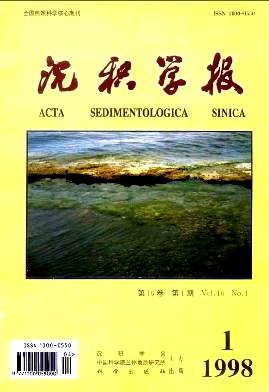Strontium and Sul f ur Isotope Compositions and the Significance of the Pal ao-Oceanic Geol ogy in the Middl a Cretaceous in the South Tibet
- Received Date: 1996-10-30
- Publish Date: 1998-03-10
-
Key words:
- visotope composition /
- material origin /
- environment evolution /
- palao-oceanic geology
Abstract: Discussed the principal features of the strontium isotope composition in oceanic carbonates and the sulfurisotope composition (pyrites)in the black shale,as well as the significance of the palao-oceanic geology in theMiddle Cretaceous in the South Tibet, as follows. 1. The 87Sr/8Sr ratio in the oceanic carbonate was about 0. 708 4-0. 709 0. Strontium originated fromthe crust amounted to 28%一3000.The influence inputted from the continental materials in the studied areawas greater than that in the other areas. The 87Sr/86Sr value in the volcanic lava was 0. 709 5,and higher thanthe average value of the synchronous basalt. The strontium,originated from the crust,in the volcanic lave ac-counted for 65.2 X 10-6 , amounting to 34%in the total. A large number of the crust origin materials was as-similated in the forming process of the volcanic lava. 2. The sulfur isotope composition (pyrites) in the black shale was 27%-31. 6%.The sulfur originatedfrom the synchronous seawater sulfate,and the pyrite was the diagenetic product in the middle— late diage-nesis. The δ34S (pyrites),formed in the different time and environment, was very different. The sulfur iso-topes could reflect the environment evolution process in the diagenesis.
| Citation: | Yin Guan, Wang Chengshan. Strontium and Sul f ur Isotope Compositions and the Significance of the Pal ao-Oceanic Geol ogy in the Middl a Cretaceous in the South Tibet[J]. Acta Sedimentologica Sinica, 1998, 16(1): 107-111. |






 DownLoad:
DownLoad: